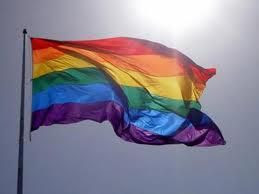Why is June Pride Month? Liz at Common Ground explains.
In the 1950’s and 60’s, there was a bar in New York City’s Greenwich Village called “The Stonewall”. It was a gay bar, patronized mostly by men and transgendered individuals who were typically married and outwardly “straight” members of their communities. These were family men, professional men…all of whom had good reasons they felt for keeping their sexual orientation or non-traditional gender identity or gender identity expression firmly under wraps.Of course, you already knew that, right?
Throughout the 50’s and 60’s, the police would raid the bar and put whoever was in it on a given night in a police wagon. They’d threaten the newly arrested men with exposure unless the men agreed to pay a sum of money each to walk away. In most, if not all instances, the money was paid.
On June 27, 1969 however, all that changed. In what some compare to the courageous act of Rosa Parks not to move to the back of the bus, when the police came by for their usual “fundraiser”, a group of patrons in the bar started what could only be described as a riot in the Village, protesting the egregious treatment and discrimination and declaring once and for all that enough was enough.
The bar (which has since closed although there is a marker on the wall where it stood in the Village) was never raided again because from that point forward, people took pride in who and what they were and if they didn’t, well then they probably didn’t hang out at the Stonewall any more.
The gay pride flag was designed by Gilbert Baker who is said to have taken his inspiration from the black civil rights and hippie movements. It was debuted in 1978 at the San Francisco Gay and Lesbian Freedom Day Parade. Its colors, always shown in the following order, symbolize:
And that is why June is Gay, Lesbian, Bisexual, Heterosexual and Transgender Pride Month…
- RED = Life
- ORANGE = Healing
- YELLOW = Sun
- GREEN = Nature
- ROYAL BLUE = Harmony
- VIOLET = Spirit



